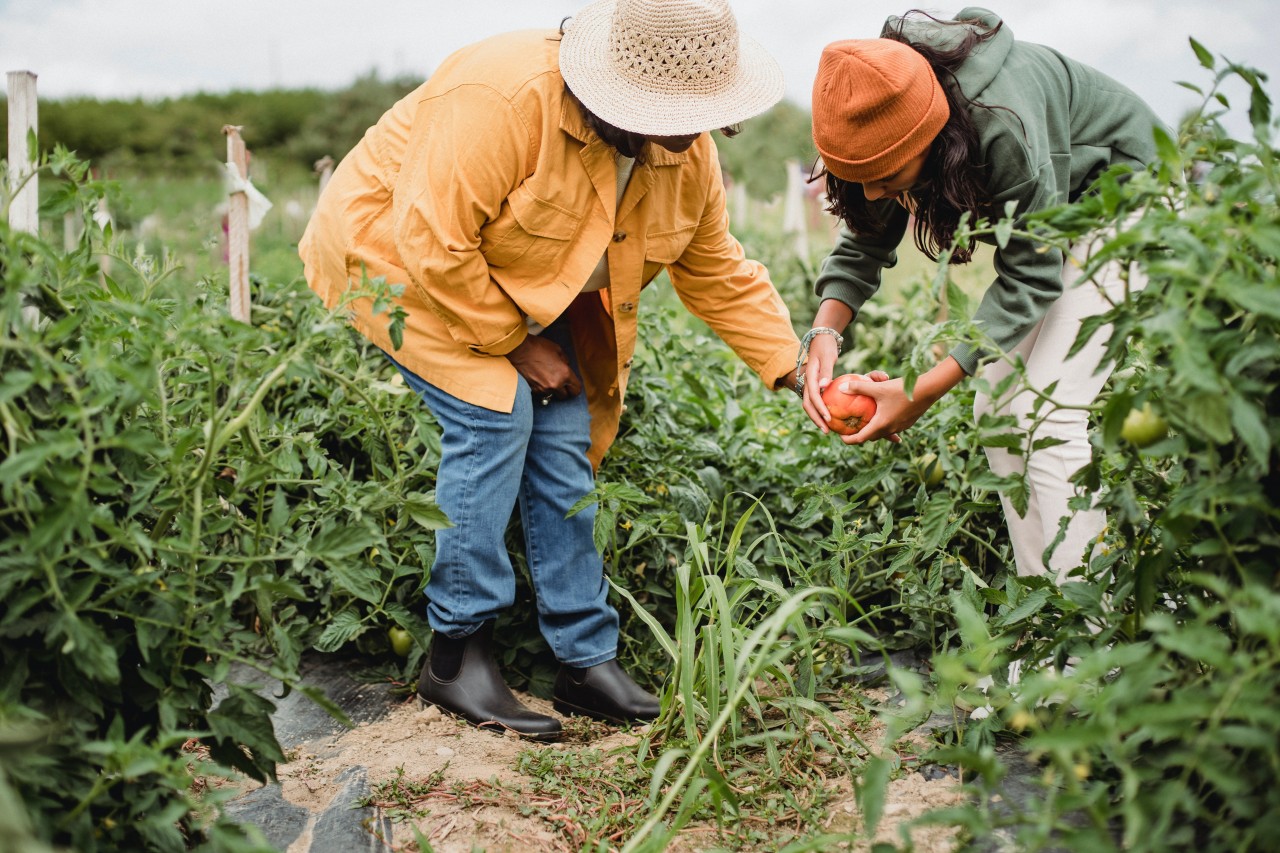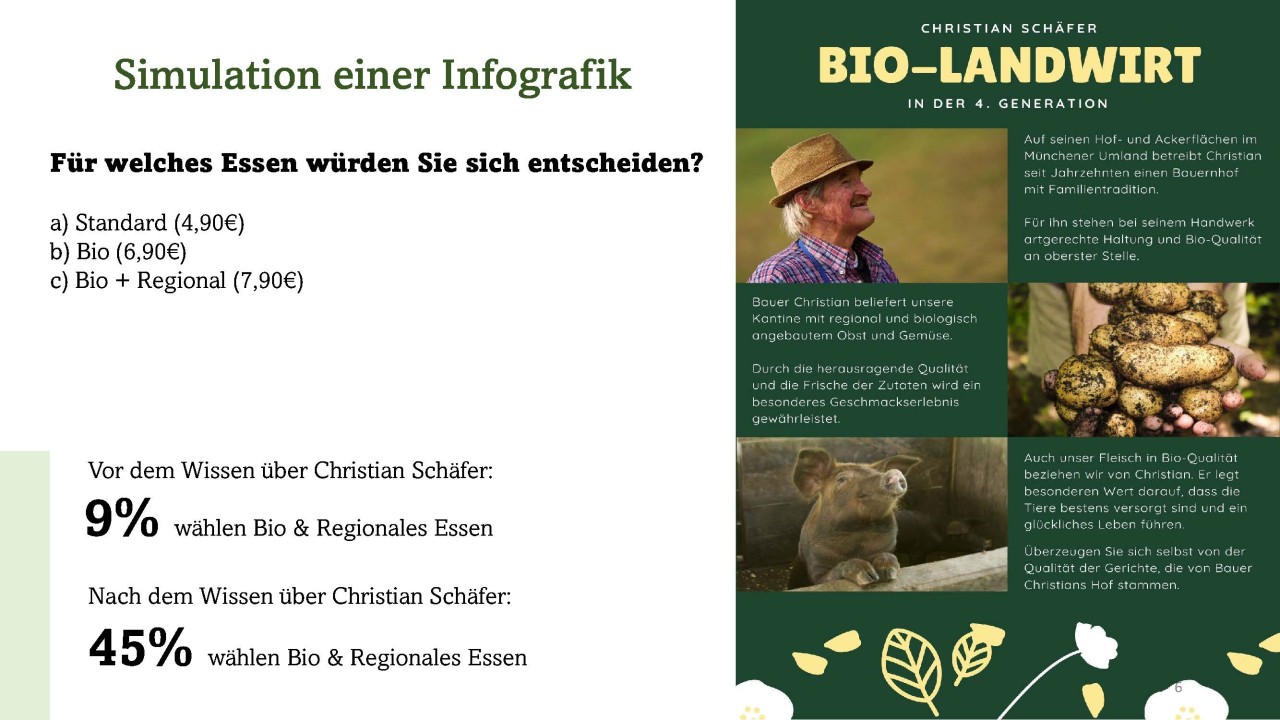EatGreener
Students design app for Green Canteen users

Overview
To this day, the idea persists that canteen food must above all be cheap and that quality always comes second. Very few employees know what exactly is used to prepare the dishes that are served. However, anyone who values a sustainable lifestyle should be able to get information about what is processed in their canteen.
In recent years, there has been a trend towards canteens trying to offer individual dishes with organic ingredients and labelling them accordingly. But organic farming is only one of the factors for "green" or sustainable food. Regionality and seasonality are at least as important.
Together with Green Canteen, students at Hochschule München University of Applied Sciences therefore took up the challenge of how "green food" could be better promoted and placed in canteens. The company Green Canteen works with organic farmers all over Bavaria and markets their seasonal products in canteens in and around Munich. Their target group is young professionals, often with families, who try to combine work and everyday life and pay attention to an environmentally conscious, healthy and economical lifestyle.
A study conducted by the students showed that when given a choice of "standard" canteen food (€4.90), "organic" canteen food (€6.90) and "organic & regional" canteen food (€7.90) and no prior knowledge about the cultivation and benefits of organically and regionally produced food, only 9% of respondents would choose the "organic & regional" option. However, if they were given an information board beforehand that explained the work of an organic farmer in detail and illustrated it with pictures, 45% said they would prefer products similarly produced.
The challenge therefore is to find a balance between prices and regional food. The aims of this DTLab challenge were to raise customer awareness of the benefits of regional and organic food and to motivate customers to buy Green Canteen food in a simple but effective way.
Approach
To find out what a customer wants and needs at the canteen, the students first devoted themselves to answering the 5 "working backwards" questions. This involved analysing the problems and needs of canteen patrons. The students then worked on ideas to improve the customer journey and on solving existing problems.
Supported by AWS and the Working Backwards strategy, the students then designed their 'Big Idea' and created various artefacts, including a storyboard, a fictional press release and a FAQ to elaborate it further.
In addition, they created another survey. It was conducted to find out which presentation of information about food a customer prefers. It concluded that short, concise and graphical information is best suited to influence customers on their food choices while in the canteen.

Solution & Prototype
The students' solution (also called "Big Idea") included a special transparency in the canteen as well as an incentive system for the customer.It consisted of a specially constructed information board containing information about the canteen, the food and the products used for it and their origin, as well as various images and features designed to encourage customers to choose ”green” products.
The benefits for the customer are an informative accompaniment along the customer journey, the possibility to profit through bonuses, e.g. in the form of free fruit or vegetable baskets after a certain number of Green Canteen purchases, as well as increased awareness of sustainable food, which in turn leads to a healthier lifestyle.
The information board is accessible via the Green Canteen app "EatGreener" by scanning a QR code in every participating canteen and was programmed using the AWS Cloud.
The solution architecture can be found here.To make the information board suitable for canteen operations, the students conducted three telephone surveys with canteen operators. Furthermore, they tested the usability of the final prototype with the help of six test persons.
Next steps
As next steps, the students recommended that Green Canteen creates introductory videos about its partners, sets up an advertisement about the impact it has already made and further cooperates with e.g. sports facilities to increase the benefit for customers when they buy a Green Canteen meal. It would also be conceivable to set up a ranking list for internal competition within a company.
About the Co-Innovation Lab
This challenge was carried out as a joint project between the DTLab and the Co-Innovation-Lab of the Munich University of Applied Sciences. The Co-Innovation Lab is a comprehensive concept for innovation projects between students and companies. Temporary innovation partnerships - in the form of projects - are created between companies, students and lecturers. Initiated by Prof. Holger Günzel and Prof. Lars Brehm (both Munich University of Applied Sciences), more than 25 innovation projects are currently carried out each year, often on an interdisciplinary basis. The Co-Innovation Lab is structured as an open community. Interested lecturers can use the concept of the Co-Innovation Lab in their courses and are welcome to actively participate in its further development.
Semester: Summer semester 2021
Faculty: FK7 - Computer Science&Mathematics and FK10 Business Administration
Professors: Prof. Dr. Lars Brehm, Prof. Dr.-Ing. Holger Günzel
Challenge partner: Green Canteen
Date: 19.07.2021
Documents
The documents that the students created during the challenge can be found here:
For more information on the project visit our Github account.